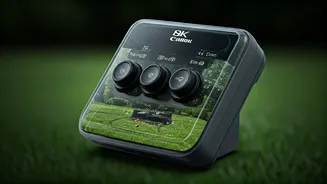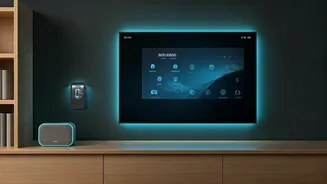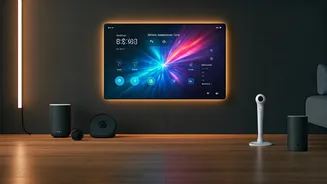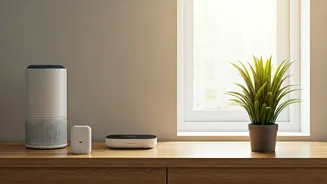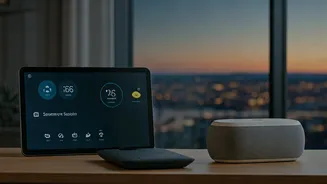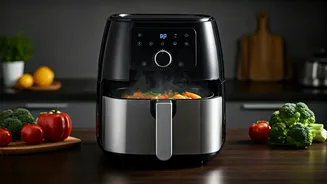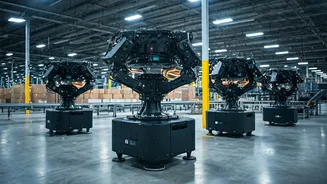What's a Smart Sprinkler?
Smart sprinkler controllers represent a significant advancement in lawn and garden care, shifting away from the traditional, often inefficient methods.
These devices leverage technology to precisely manage irrigation based on real-time data and user preferences. Unlike standard timers that operate on fixed schedules, smart controllers connect to the internet and gather information from local weather stations, soil moisture sensors, and even historical data. This integration allows them to dynamically adjust watering schedules, providing the appropriate amount of water only when needed. This approach not only promotes healthier lawns by preventing overwatering and underwatering but also reduces water bills and contributes to water conservation efforts. Smart controllers can be easily controlled via smartphone apps, offering homeowners complete control over their irrigation systems from anywhere. This convenience enables users to monitor, adjust, and customize their watering routines with ease, making lawn care more efficient and user-friendly.
Key Features Explored
When evaluating smart sprinkler controllers, several key features distinguish the best from the rest. The integration with local weather data is paramount; this feature allows the controller to adjust watering based on predicted rainfall and temperature, preventing unnecessary irrigation. Connectivity options, typically Wi-Fi, are essential for remote control and access to weather updates. Smart controllers often come with mobile apps that provide a user-friendly interface for managing schedules, monitoring water usage, and receiving alerts. Advanced models include soil moisture sensors that provide real-time data on soil conditions, further optimizing watering. Multiple zone support is another critical feature, enabling the user to customize watering schedules for different areas of the lawn and garden based on their specific needs. Some controllers offer smart home integration with platforms like Amazon Alexa or Google Assistant, allowing voice control and seamless integration with other smart home devices. Another important factor is the ease of installation and setup. The ideal smart sprinkler controller should have a straightforward process that minimizes the need for professional help. Furthermore, consider the controller's durability and the quality of its components, which directly affect its lifespan and performance.
Installation and Setup
Installing a smart sprinkler controller involves a few straightforward steps, though the specific process can vary slightly depending on the model. Before starting, it is crucial to turn off the water supply to the sprinkler system and disconnect the old controller. Next, identify and label the wires connected to the old controller to ensure they are reconnected correctly. Then, mount the new smart controller in a suitable location, usually indoors or in a weatherproof enclosure. After that, connect the labeled wires to the corresponding terminals on the new controller, following the manufacturer’s instructions. The next step involves connecting the controller to your home's Wi-Fi network, which is often done through the device’s mobile app. Once connected, you can set up the watering zones by defining the number of zones your system has and assigning each zone to specific sprinkler heads. Finally, create a watering schedule by specifying the start times, watering durations, and frequency for each zone. Also, consider integrating any optional features like weather data integration and soil moisture sensors. Regular testing and adjustments are necessary to optimize the system for your lawn's specific needs, which can be easily done through the controller's app. Ensure that you consult the manufacturer's manual for detailed instructions.
Benefits of Smart Control
Smart sprinkler controllers offer numerous benefits over traditional irrigation methods. Perhaps the most significant advantage is water conservation. By adjusting watering schedules based on real-time weather data and soil conditions, these controllers significantly reduce water waste. They prevent overwatering during rainy periods, and they apply water only when the plants truly need it. This water efficiency can lead to considerable savings on water bills, potentially offsetting the initial cost of the controller over time. They improve lawn health. Smart controllers ensure that each area of the lawn gets the precise amount of water, which encourages healthy root growth and prevents common problems associated with both overwatering and underwatering. Furthermore, the convenience of remote control cannot be overstated. With a smart controller, you can monitor and adjust your irrigation system from anywhere using your smartphone. Whether you're on vacation or simply at work, you can easily make changes to your watering schedule. This offers peace of mind and flexibility in managing your lawn care, adapting to unexpected weather changes or other situations. Smart controllers are also known for their user-friendliness, offering intuitive mobile apps and easy setup processes.
Choosing the Right One
Choosing the right smart sprinkler controller depends on several factors, including your specific needs and the features available. Consider the size of your lawn and the number of zones you need to water. A larger lawn with multiple zones requires a controller that can handle more stations. Research the controller’s features, focusing on weather integration, soil moisture sensor compatibility, and smart home integration options. Assess the user interface of the mobile app to ensure it is intuitive and easy to use. Also, consider the controller's compatibility with your existing sprinkler system and any additional equipment, such as rain sensors or solenoid valves. Read customer reviews and compare different brands to understand their reliability and customer support. Look for controllers that offer warranty coverage and good technical assistance. Evaluate the cost of the controller, considering both the initial purchase price and any ongoing costs, such as subscription fees for advanced features. Finally, take into account your personal preferences and the level of control you desire. Some users prefer a hands-off approach, relying heavily on automated features, while others prefer more manual control. The perfect choice balances all these aspects with your specific requirements.
